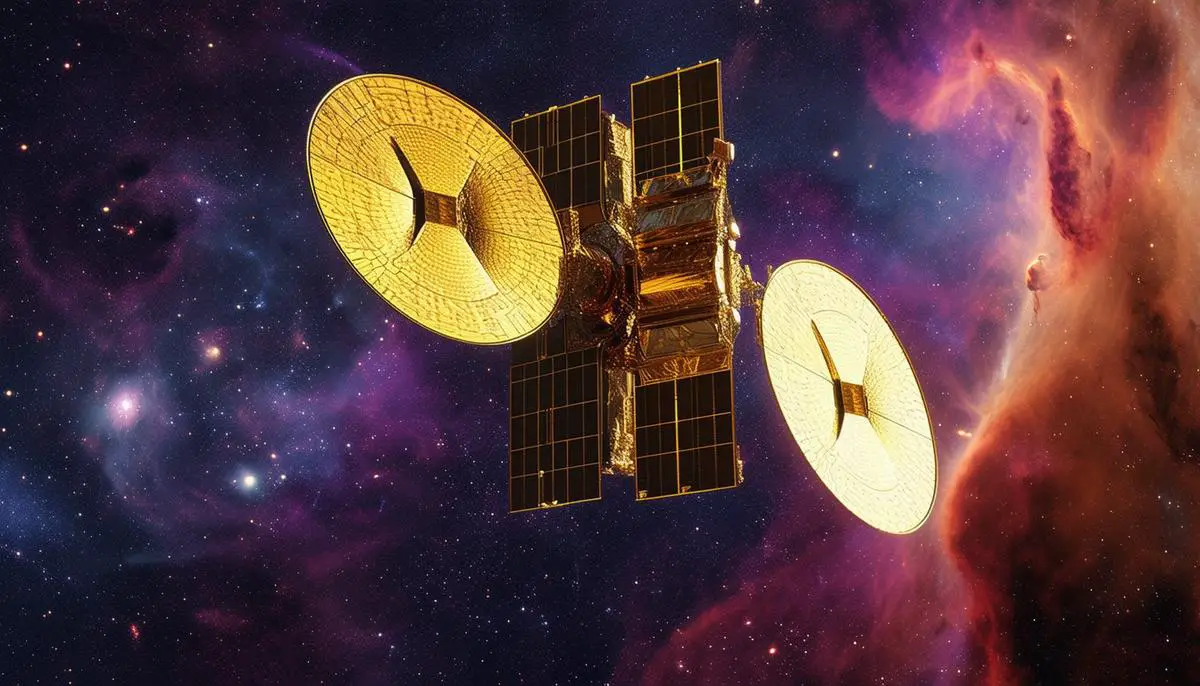JWST's Mission and Capabilities
The James Webb Space Telescope (JWST), launched in December 2021, is a cutting-edge observatory designed to explore the universe in unprecedented ways. It investigates the formation of stars and planets, examines the lifecycle of galaxies, and seeks to understand phenomena like black holes.
JWST focuses on observing the universe in infrared wavelengths, allowing it to peer through cosmic dust and detect objects hidden from view in visible light. Its advanced infrared instruments enable it to see further and deeper than its predecessor, the Hubble Space Telescope.
One of the remarkable instruments aboard JWST is the NIRSpec, a near-infrared spectrograph provided by the European Space Agency (ESA). NIRSpec is crucial for large spectroscopic surveys, allowing scientists to study numerous astronomical objects simultaneously. Another essential instrument, MIRI, operates at mid-infrared wavelengths and supports the entire range of JWST's scientific objectives. It offers various observing modes to study everything from the formation of planets to the early universe.
JWST's primary mirror, spanning 6.5 meters in diameter, significantly surpasses Hubble's 2.4-meter mirror. This larger mirror allows JWST to collect more light, enhancing its ability to detect faint astronomical objects. Additionally, JWST is stationed at a Lagrange point, approximately 1.5 million kilometers from Earth, providing a stable observing platform free from the distortions of Earth's atmosphere.
With its suite of advanced instruments, JWST is set to revolutionize our understanding of the universe. From distant galaxies and black holes to star formation and the building blocks of life, the telescope's capabilities are pushing the boundaries of human knowledge, offering a glimpse into the intricate structure of the cosmos.
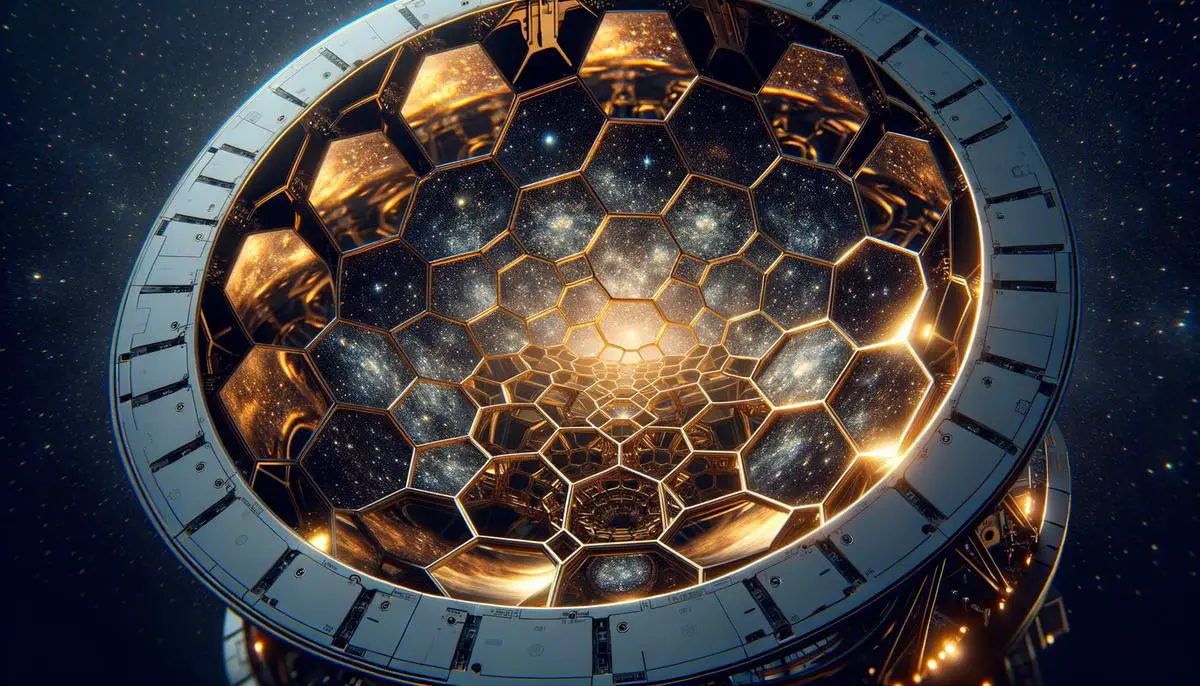
Key Discoveries and Observations
One of JWST's most monumental achievements has been the detection of the universe's oldest known galaxies. The telescope captured an image of a galaxy dating back to merely 300 million years post-Big Bang, outshining the previous record-holder by 100 million years.1 This ancient galaxy, GN-z11's discovery, gives astronomers a critical piece of the puzzle regarding the formation and evolution of the earliest celestial bodies in the cosmos.
JWST's exploration isn't confined to distant galaxies; its ability to analyze exoplanet atmospheres marks another significant milestone. The detection and study of WASP-96b's atmospheric composition were particularly fascinating. The telescope's high-resolution capabilities revealed the presence of water vapor, sodium, and even traces of other molecular compounds.2 By studying the atmospheric conditions of exoplanets, JWST is helping scientists understand the potential habitability of worlds beyond our solar system.
JWST has considerably advanced our knowledge of star formation in nebulous regions. Observations of the Horsehead Nebula and other star-forming regions have unveiled intricate details of the stellar birth process. The telescope's ability to peer through dense cosmic dust has allowed it to capture the tumultuous environment where stars are born.
JWST's investigation into protostellar systems has proven illuminating, particularly in the context of astrochemistry. Observing the icy surroundings of nascent stars like IRAS 2A and IRAS23385 has led to the detection of complex organic molecules.3 These findings emphasize the potential for life-building molecules to form under such conditions.
The telescope's observations of dwarf galaxies have also challenged and expanded our understanding of the early universe. By documenting the intense radiation emitted from these comparatively small but abundant galaxies during the epoch of reionization, JWST has provided evidence that these entities have played a critical role in transforming the universe from neutral to ionized.4
Altogether, JWST's key discoveries and observations have expanded our understanding of the cosmos and provided a wealth of data that will fuel future astronomical research for years to come. It stands as a testament to human ingenuity and curiosity, pushing the boundaries of what we know and continuously inviting us to look further and deeper into the vast universe that surrounds us.

Technological Innovations
One of the most awe-inspiring aspects of the James Webb Space Telescope (JWST) is its collection of advanced technological innovations, which are pivotal to its superior capabilities in space observation. Central to this is JWST's primary mirror, an engineering marvel composed of 18 hexagonal segments that collectively form a mirror spanning 6.5 meters in diameter. This substantial increase in size compared to Hubble's 2.4-meter mirror translates to an impressive six times the light-gathering area, enabling JWST to detect the faintest and most distant objects in the cosmos with unprecedented clarity.
Built out of beryllium and coated with a layer of gold to optimize infrared reflection, each segment of the primary mirror can be individually adjusted for precision alignment, ensuring that the telescope maintains perfect focus. This adaptive capability is crucial for achieving the high-resolution observations necessary for deep space exploration.
Complementing the primary mirror is JWST's innovative sunshield, which measures an expansive 22 by 12 meters. This sunshield is comprised of five thin membranes made from a material called Kapton, each thinner than a human hair, which serve to protect the telescope from the sun's heat. The sunshield operates by maintaining a temperature difference of about 600 degrees Celsius between its cold and hot sides, ensuring that the instruments remain at cryogenic temperatures necessary for infrared observations.
JWST's suite of cutting-edge instruments further sets it apart from its predecessors. For instance, the Near-Infrared Spectrograph (NIRSpec), provided by the European Space Agency, is capable of simultaneously observing up to 100 astronomical objects with its multi-object spectroscopy mode.5 Equally impressive is the Mid-Infrared Instrument (MIRI), developed with contributions from both the European Space Agency and NASA. MIRI operates at mid-infrared wavelengths, allowing it to observe cooler and dustier regions of the universe that are invisible in shorter wavelengths.
Another technological advancement is JWST's deployment at the second Lagrange point (L2), a stable orbital position approximately 1.5 million kilometers from Earth. This location offers JWST a consistent and unobstructed view of the cosmos, free from the interference and variability faced by Earth-orbiting telescopes. Such a stable observing platform allows continuous data collection over extended periods, essential for monitoring transient astronomical events and conducting long-duration surveys.
With these innovations, JWST serves as the successor to Hubble and a testament to how far technology has come. From its intricate mirror alignment systems to its advanced thermal controls and versatile spectroscopic instruments, JWST exemplifies humankind's drive to push the boundaries of knowledge and explore the universe's profound mysteries. As it continues to illuminate the darkest corners of space, JWST is poised to unravel cosmic secrets and inspire the next generation of astronomers and engineers.
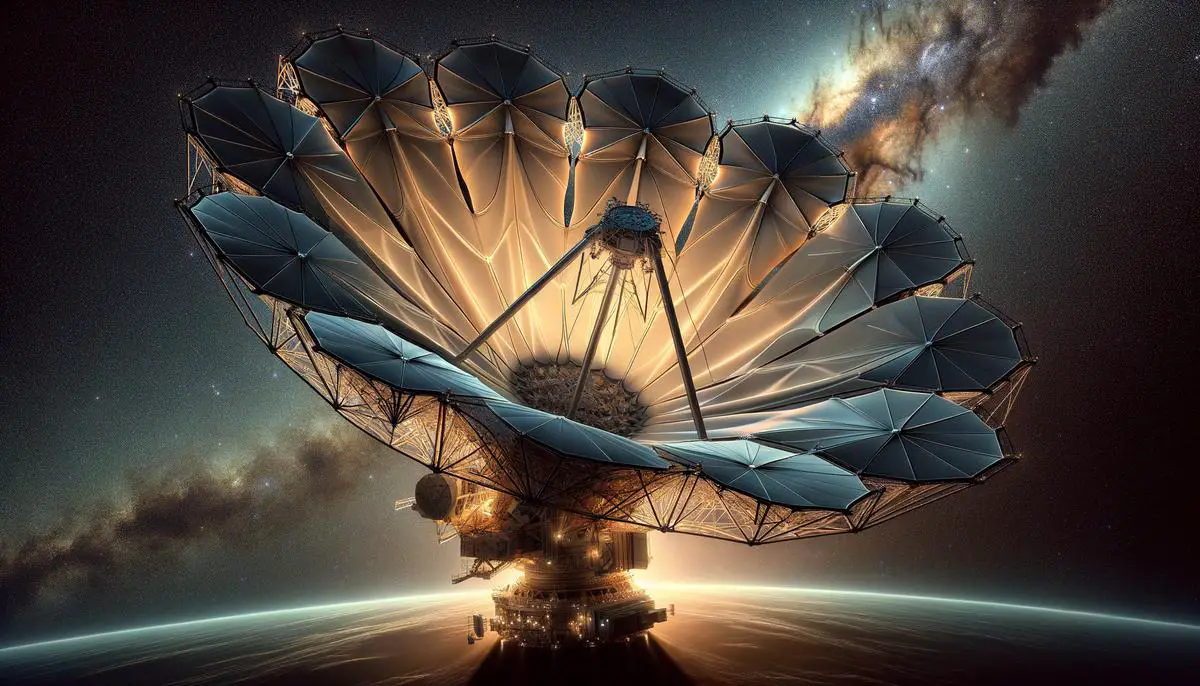
Challenges and Milestones
The path to the James Webb Space Telescope (JWST) becoming a reality was fraught with significant challenges and impressive milestones, a testament to the dedication and perseverance of the teams involved. Initially envisioned in 1996 with an estimated budget of $500 million, the JWST project quickly encountered escalating costs and delays. By the time of its launch, the project's price tag had ballooned nearly 20-fold to about $10 billion. These cost overruns stemmed from various technical difficulties and the sheer intricacy of the telescope's components and systems.
One of the most notable technical challenges was the development of the telescope's massive 6.5-meter primary mirror. Constructed from 18 hexagonal beryllium segments, each coated with a thin layer of gold for optimal infrared reflection, the mirror required extreme precision. The segments had to be lightweight yet sturdy enough to withstand the rigors of space travel, and they needed to be carefully aligned to function as a single, cohesive unit. The introduction of adaptive alignment technology was crucial in this regard, allowing each segment to be adjusted with nanometer precision once JWST was in space.
Another significant hurdle was the design and deployment of JWST's sunshield. Measuring 22 by 12 meters and made of five ultra-thin layers of Kapton, the sunshield had to unfold and tension perfectly once in space. Any failure in this process would compromise the telescope's ability to maintain the extremely low temperatures required for its infrared instruments. Engineers conducted countless tests and redesigns to ensure the sunshield's deployment sequence would perform flawlessly.
Additionally, the intricacies of placing JWST at the second Lagrange point (L2) added further challenges. Positioned 1.5 million kilometers from Earth, the L2 point provides a stable environment for observing the cosmos but also poses difficulties for direct human intervention. This necessitated that all components function as intended after launch, with no real possibility for on-the-spot repairs or adjustments.
Despite these obstacles, the JWST project achieved several key milestones that marked significant progress towards its eventual success.
- Successful launch: JWST was successfully launched on an Ariane 5 rocket from Europe's Spaceport in French Guiana on December 25, 2021.
- Deployment phase: Over several weeks, JWST's components carefully unfolded and aligned. The primary mirror segments adjusted to create a unified reflective surface, while the sunshield extended to its full configuration.
- Arrival at L2: JWST arrived at the L2 point on January 24, 2022, and began its calibration and alignment phase. This period involved precisely tuning the instruments and ensuring the telescope would deliver the crisp, detailed images that had been promised.
- First images: The culmination of the calibration and alignment phase resulted in JWST capturing its first set of images, an occasion that was both thrilling and historic for the astronomical community.
On July 12, 2022, NASA released JWST's inaugural set of full-resolution science images. Among them was a breathtaking image of the Carina Nebula, showcasing star formation in unparalleled detail. Other images included the Eight-Burst Nebula, Stephan's Quintet, and a galaxy cluster illustrating the phenomenon of gravitational lensing. These early releases underscored the telescope's immense capabilities and set the stage for a cascade of scientific discoveries that would follow.
In the ensuing months, JWST continued to exceed expectations with its observations. Scientists marveled at its ability to provide clear insights into cosmic phenomena that had previously been shrouded in mystery. From identifying the chemical makeup of exoplanet atmospheres to unveiling the details of ancient galaxies, JWST began to stitch together a more intricate picture of the universe's history and structure.
Reflecting on the journey of JWST, it becomes clear that each challenge surmounted and milestone achieved was a vital step towards the telescope's groundbreaking capabilities. The perseverance and ingenuity of the international collaboration behind its creation highlight the profound dedication to expanding our understanding of the cosmos.
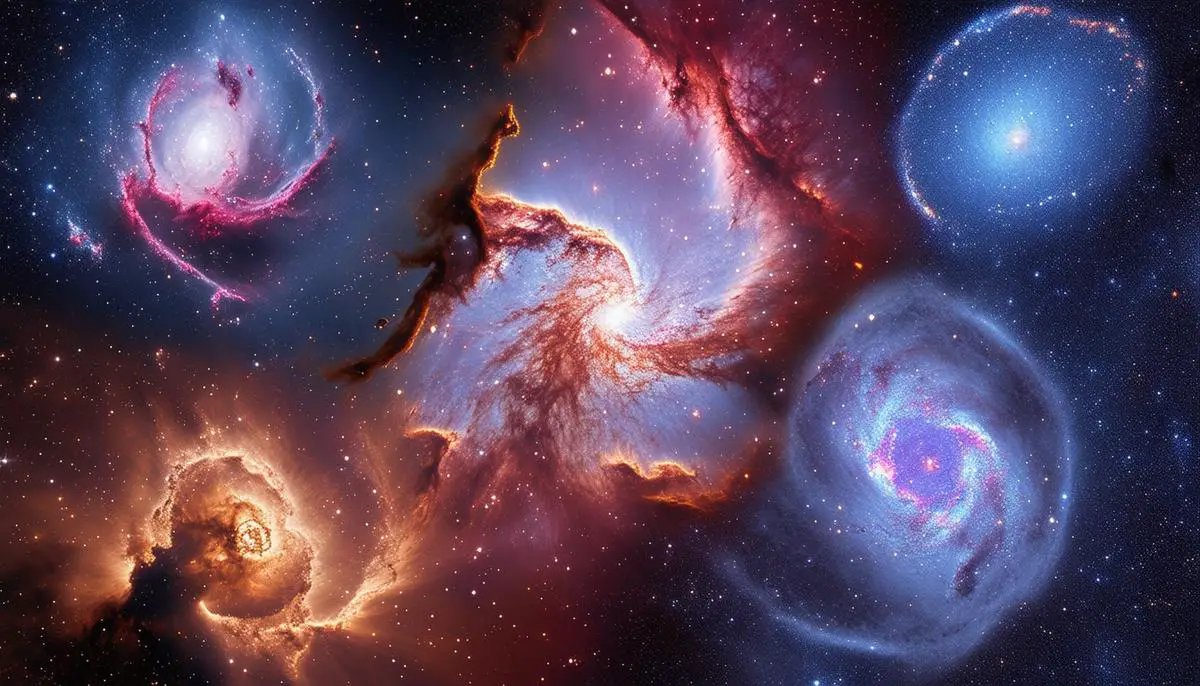
Future Prospects and Research
As we look ahead to the future of the James Webb Space Telescope (JWST), the excitement within the scientific community is palpable. With its unparalleled capacity to peer deeper into the cosmos than ever before, JWST is poised to be at the forefront of numerous groundbreaking research projects that promise to push the boundaries of our understanding of the universe.
One of the key areas of focus for upcoming JWST observations will be the detailed study of exoplanet atmospheres. Building on its previous successes, the telescope will continue to scrutinize a diverse array of alien worlds, from hot Jupiters and super-Earths to potentially habitable exoplanets. Researchers aim to glean a deeper understanding of the atmospheric composition of these worlds, examining elements such as water vapor, methane, carbon dioxide, and other organic molecules. By characterizing the atmospheres of a wide variety of exoplanets, JWST will help us assess their potential for hosting life and broaden our knowledge of planetary systems far beyond our own.
In addition to studying exoplanets, JWST is set to explore some of the earliest epochs of the universe. One of the telescope's prime missions is to observe the first galaxies that formed after the Big Bang. By studying these primordial galaxies, JWST aims to uncover how they assembled and evolved, shedding light on the processes that shaped the modern universe. These observations will provide invaluable data on the formation of stars and galaxies in the cosmic dawn, offering a glimpse into a time when the universe was still in its formative stages.
Another exciting research avenue for JWST is its investigation into the nature and distribution of dark matter and dark energy. These components make up approximately 95% of the universe, yet remain largely mysterious.1 JWST's sensitive instruments will allow scientists to map the distribution of dark matter in galaxies and clusters of galaxies through gravitational lensing. By precisely measuring how light from distant objects is bent by the gravitational influence of dark matter, researchers hope to gain insights into its properties and distribution.
JWST will also play a significant role in studying the lifecycle of stars and the material ejected during stellar processes. Future observations will explore the intricate details of star formation regions, supernova remnants, and the mechanisms driving stellar evolution. Its ability to see through dense clouds of gas and dust will enable the telescope to capture stunning images and spectra of regions where stars are being born, providing a clearer picture of the initial conditions leading to star and planet formation.
JWST's investigations into protoplanetary disks will continue to offer critical information about the formation of planetary systems. By examining the processes occurring within these disks, including the accretion of material onto young stars and the formation of planets, JWST will help elucidate the complex interactions that lead to the emergence of diverse planetary architectures. This research is fundamental for understanding how our own solar system formed and evolved, offering a comparative framework to study other systems in the universe.
Astrobiology is another field that stands to benefit immensely from JWST's future studies. By detecting complex organic molecules and potentially biosignature gases in the atmospheres of exoplanets, JWST will advance the search for life beyond Earth. These investigations will focus on identifying the components necessary for life and on understanding the environmental conditions that could sustain it. As such, JWST's contributions will be pivotal in addressing the age-old question of whether we are alone in the universe.
In tandem with these ambitious scientific goals, JWST will continue to observe a plethora of cosmic phenomena, from the dynamic behaviors of active galactic nuclei and their supermassive black holes to the detailed structures of star-forming regions and interstellar medium. Each observation promises to unlock new knowledge and refine our models of astrophysical processes.
Collaborations and synergies with other telescopes and observatories will enhance the depth and breadth of JWST's contributions. For example, combining JWST's infrared capabilities with the data from forthcoming missions like the European Space Agency's Laser Interferometer Space Antenna (LISA) will open new avenues for detecting and studying gravitational waves, allowing a holistic exploration of cosmic events and their aftermaths.
The longevity of JWST's mission also ensures a sustained impact on the field of astronomy. As technology continues to advance, the telescope is expected to receive software updates and enhancements that will optimize its performance. This will enable researchers to conduct more refined experiments and observations, keeping JWST at the cutting-edge of space exploration for years to come.
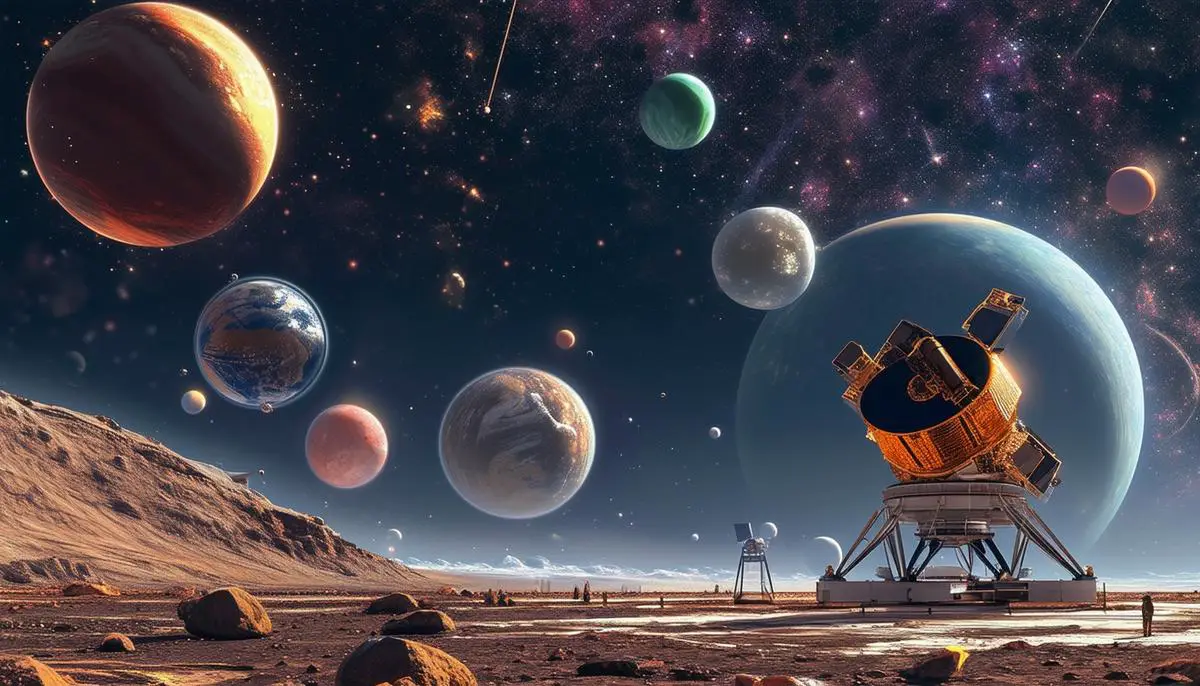
As we continue to push the boundaries of our understanding, the James Webb Space Telescope stands as a beacon of human ingenuity and curiosity. Its advanced capabilities promise to unravel the mysteries of the cosmos, offering profound insights into the universe's history and structure. The journey ahead is filled with potential, and JWST is poised to illuminate the path, enriching our knowledge and inspiring future generations.
![]()
